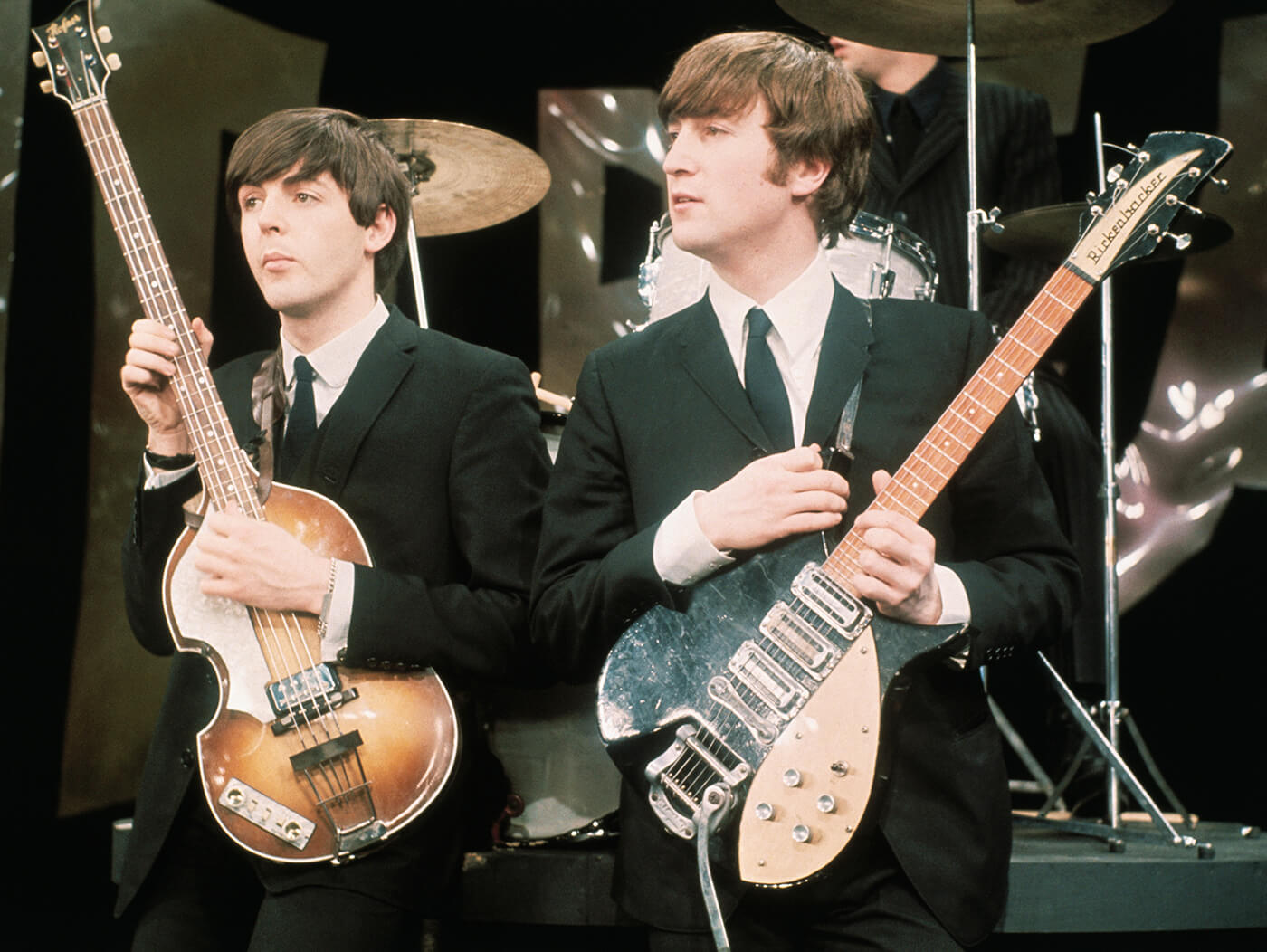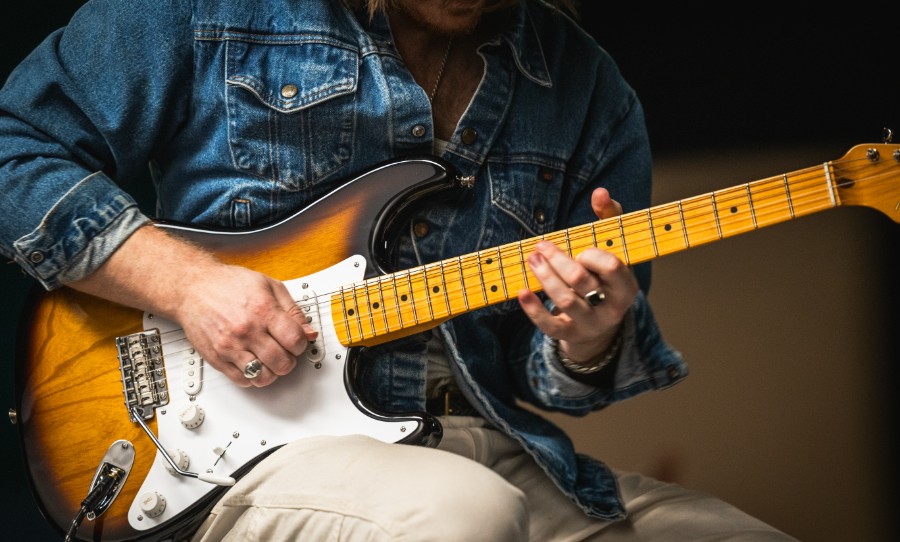The short scale bass has been holding down the bottom end for decades. Let’s see why this short-in-stature yet larger-than-life instrument is more popular than you know.
Generally, a standard electric bass guitar has a neck length of 34 inches or 86 cm whilst a short scale bass is generally anything under 31 inches or close to 79 cm. The consequences of this are that the frets are smaller, the strings are looser even when tuned to standard tuning, and tonally, you get a thicker low end and less upper harmonics.
You’ll find that the bodies of short scale basses are smaller than normal, everything looks a little like ‘Honey, I shrunk the bass’ — but what isn’t shrunken is the tone. So let’s count down the classics — and some of the new players — in the short scale arena.

The Höfner 500/1: the ‘Beatle’ bass
The ‘Beatle‘ bass, aka the ‘Violin’ bass, aka the Höfner H500/1 series, is possibly the most iconic of the short scale basses coming in at 30 inches.
Its cousin, the Höfner 500/2 Club Bass has the same 30-inch neck length, but a more classic guitar-shaped body designed for players who wanted the ‘McCartney‘ sound without the look. Tina Weymouth of Talking Heads fame uses one (as well as a Fender Mustang and Musicmaster bass). In recent times, Kevin Parker, more famously known as Tame Impala, has been rocking this classic.
For more details, visit Höfner.
The Fender Mustang and Musicmaster
The Fender Mustang is a revered short scale bass. Originally made in 1966, it was the last bass design by Leo Fender before he moved on from the Fender company. The design is so iconic that it has been bought back into production as both Fender American Performer series, Vintera vintage series, and also a signature model from Justin Medal-Johnsen — a session wizard who’s played with Beck, Air and many more.
Off-shoots from the Mustang are the MusicMaster and Bronco basses. The MusicMaster, which was originally made from surplus Fender parts and leftover Mustang bodies, has become a popular choice of short scale and fetches upwards of $2K on the second-hand market.
For more details, visit Fender.
Gibson and Epiphone short scales
Gibson had a go at creating its own ‘Violin’ bass with the EB-1 in 1953. It included a screw-in pole and painted on F-holes to give it the look of a double bass and was in response to the success of the Fender Precision bass. Fast forward to 1961 and Gibson introduced a progression of the EB-1 with an SG shaped Bass called the EB-3. The most famous player and recording would have to be Jack Bruce of Cream on the song Sunshine of Your Love.
For more details, visit Gibson.
Epiphone, purchased by Gibson in 1957, made a semi-hollow body bass guitar, inclusive of F-holes on both sides, called the Rivoli from 1959 until 1970, with a reissue from 1993 to 1999. Paul Simonon from The Clash can be seen playing one in the film clip to London Burning.
For more details, visit Epiphone.
Kala U-Bass: don’t let the size fool you
In more recent times, ukulele maker Kala created the U-Bass series. These are ukulele basses in either fretted or fretless models, some with cutaways and f-holes, inclusive of a big low end and a high-quality pickup all at an affordable price point. Even Kendrick Lamar‘s bassist Tony Russel uses one!
Bassist Bakithi Kumalo, who played an incredible fretless bassline on Paul Simon‘s You Can Call Me Al, has a signature U-Bass model with Kala.
For more details, visit Kala.
Danelectro and its horns
Whilst Danelectro still produce their short scale, ironically called the Longhorn bass (first made in 1958), their much more conventional-looking Shorthorn bass is a rare item, fetching upwards of $2K on the second-hand market if you can find one.
Interestingly, the Shorthorn bridge is placed at the very end of the body giving the strings maximum length and the neck minimum length. The Longhorn bass follows Danelectro’s unique aesthetic with its curves, long horns, lipstick pickups and late 50s style knobs. Definitely one to add to the audition list.
For more details, visit Danelectro.
New offerings
In some ways it’s understandable: the short scale bass was originally marketed as a children’s instrument. But it’s easily transcended this original purpose, with many makers still tweaking the short scale formula.
The Ernie Ball Music Man StingRay bass, for example, comes in a short scale configuration with a 30-inch length neck. Some reviewers remarking that the sound is no different to the standard length StingRay.
Gretsch and Warwick both have very cool offerings in the short scale market. Gretsch with its Electromatic Hollow body, short scale and Junior Jet basses, and Warwick with its classy Rockstar Starbass inclusive of F-holes, chunky single-coil pickups and special two-piece Warwick bridge.
The short scale bass is everywhere. The physics of the instrument paradoxically create more low end than you would expect. Yet, its finger-friendly proportions make it easy to zip around the fretboard. It has embedded itself into the musical fabric of popular recordings, is regularly found on the stage, and is an accessible instrument for all shapes and sizes. Indeed, it begs the question: do we even need ‘long scale’ basses?



